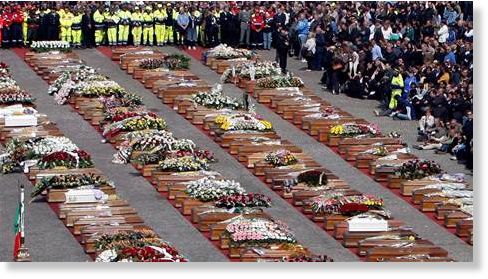
Earthquake prediction can be a grave, and faulty science, and in the case of Italian seismologists who are being tried for the manslaughter of the people who died in the 2009 L'Aquila quake, it can have legal consequences.
The group of seven, including six seismologists and a government official, reportedly didn't alert the public ahead of time of the risk of the L'Aquila earthquake, which occurred on April 6 of that year, killing around 300 people, according to the U.S. Geological Survey.
But most scientists would agree it's not their fault they couldn't predict the wrath of Mother Nature.
"We're not able to predict earthquakes very well at all," John Vidale, a Washington State seismologist and professor at the University of Washington, told LiveScience.
Even though advances have been made, the day scientists are able to forecast earthquakes is still "far away," Dimitar Ouzounov, a professor of earth sciences at Chapman University in California, said this month regarding the prediction of the March 11 earthquake in Japan.
L'Aquila Faults
The decision to try the six members of a committee tasked with determining the risk of an earthquake in the area (along with a government official) was announced on Wednesday (May 25) by Judge Giuseppe Romano, according to a news article from the American Association for the Advancement of Science.
Some people said the committee should've seen it coming, because of the earthquake swarms that occurred days before the big one struck, Vidale said.
"We get swarms of earthquakes all the time without a big earthquake. There was nothing strange about this swarm to suggest a big earthquake," Vidale said in a telephone interview.
Regarding the charges against the Italian seismologists, Vidale said "we're offended" that they are being charged with a crime "for telling the truth." That truth is, he added, there was nothing to say that the level of danger was enough to warrant any public action.
Why We Can't See One Coming
Talking with Vidale, one gets the impression that predicting an earthquake would take a miracle, as there are so many unknowns.
"One problem is we don't know how much stress it takes to break a fault," Vidale said. "Second we still don't know how much stress is down there. All we can do is measure how the ground is deforming." Not knowing either of these factors makes it pretty tough to figure out when stresses will get to the point of a rupture, and an earth-shaking quake, he explained.
To get measurements of the actual stresses, researchers have to drill miles beneath the surface - an engineering feat on its own - and would only be able to drill a couple places to put sensors along the fault. (Drilling has been done along the San Andreas fault, but no one has measured the stress at depth there, Vidale said.)
On top of all that, the L'Aquila region is a particularly complex nut to crack geologically. While mostly horizontal strike-slip faults, like the San Andreas, are much clearer faults to analyze, the L'Aquila fault system is complex, with several so-called "normal" faults moving mostly vertically.
And several tectonic processes are active in the region: The Adria micro-plate is being subducted under the Apennines from east to west, while at the same time continental collision is occurring between the Eurasia and Africa plates (responsible for the building of the Alps).
Digging into the Past
With all the downers, earthquake prediction science, it seems, is coming back into fashion after a lull in the 80s when methods weren't showing any success, Vidale said. The key is to find some strange phenomenon that occurs before, days before, an earthquake, that seismologists can recognize.
While they haven't found any silver bullet, scientists are digging up data on past earthquakes along fault systems to give them an idea of the probability another will occur. Even so, probability of an earthquake coming "doesn't help with predictions a day before an earthquake," Vidale said.
Another method involves detecting evidence of unusual amounts of radon gas in the atmosphere. Right before an earthquake, the fault may release more gases, including radon. In fact, Ouzounov and colleagues found such anomalous signatures in the atmosphere above Japan days before the March 11 quake struck.
No one has ever predicted an earthquake from atmospheric data, and plenty of supposed earthquake precursors, from weird animal behavior to groundwater flowing the wrong way, have proven hit-or-miss.
Of the radon gas method, Vidale said, "now we're pretty confident that's not reliable."



Reader Comments
to our Newsletter